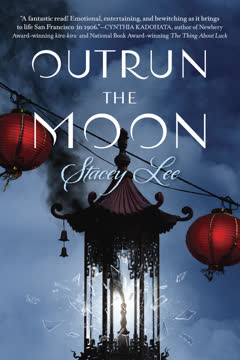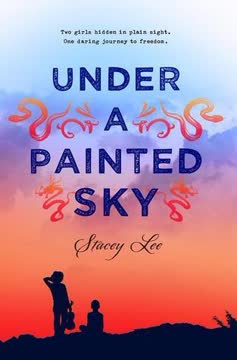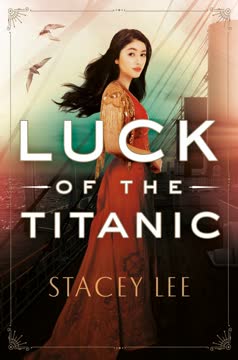Plot Summary
Skyward Beginnings, Earthbound Dreams
Fifteen-year-old Mercy Wong, daughter of Chinese immigrants in 1906 San Francisco, is determined to break free from the poverty and prejudice that define her world. Her story opens with a literal and metaphorical ascent: a hot air balloon ride with her childhood friend Tom, symbolizing her ambition to rise above her circumstances. Mercy's dreams are not just for herself but for her family—especially her sickly younger brother Jack. She is resourceful, bold, and unafraid to challenge fate, even as superstition and hardship shadow her every step. This opening sets the tone for a journey where hope and risk are inseparable, and where Mercy's aspirations will be tested by both the limits of her world and the disasters to come.
Chinatown's Boundaries, Family's Bonds
Mercy's life is shaped by the tight-knit, insular world of San Francisco's Chinatown, a place both vibrant and confining. Her family's struggles—her father's grueling hours at the laundry, her mother's fortune-telling, and Jack's fragile health—are compounded by the racism and legal barriers that keep Chinese families segregated and impoverished. Yet, within these boundaries, Mercy finds strength: in her parents' love, her brother's innocence, and the community's resilience. She is both a dutiful daughter and a rebel, chafing against tradition while honoring her roots. The chapter explores the tension between filial piety and personal ambition, and the ways in which Mercy's identity is forged in the crucible of both love and limitation.
Chocolate Ambitions, Prejudice Walls
Determined to secure a better future, Mercy sets her sights on St. Clare's School for Girls, an elite, all-white institution. Her entry point is a shrewd business deal: she barters a rare Chinese herb with Madame Du Lac, wife of the school board president, in exchange for a meeting. The encounter at the Chocolatier Du Lac exposes the casual racism and classism of white San Francisco, as Mercy and Jack are humiliated and dismissed. Yet, Mercy's wit and tenacity win her a chance to plead her case. This chapter highlights the intersection of race, gender, and economic ambition, as well as the ingenuity required to navigate a world stacked against outsiders.
Bargaining for Opportunity
Mercy's meeting with Monsieur Du Lac is a battle of wits and wills. She leverages her knowledge of business, the needs of Chinatown, and the school's public funding to secure a three-month trial at St. Clare's—on the condition that she helps the Du Lac chocolate business gain access to the Chinese market. The deal is fraught with risk: Mercy must pose as a wealthy Chinese heiress, hide her true origins, and succeed in a world that is both foreign and hostile. The chapter explores the cost of opportunity, the compromises of assimilation, and the courage required to seize a narrow window of hope.
Heiress in Disguise
Arriving at St. Clare's, Mercy is thrust into a world of wealth, etiquette, and subtle cruelty. She must master new rules—of comportment, language, and social hierarchy—while concealing her background. Her roommate, Elodie Du Lac, is both rival and gatekeeper, embodying the privilege and prejudice of the school. Mercy's outsider status is reinforced by the other girls' suspicion and the headmistress's scrutiny. Yet, she also finds unexpected allies: Francesca, the Italian-American girl with her own outsider status; Ruby, the gentle Southern twin; and a handful of others who see beyond the surface. The chapter is a study in adaptation, code-switching, and the loneliness of passing.
New Rules, Old Rivalries
Mercy's days at St. Clare's are a gauntlet of social tests: humiliating tea ceremonies, embroidery classes, and the constant threat of exposure. Elodie's antagonism escalates, culminating in public pranks and accusations. Yet, Mercy's resilience and humor win her a small circle of friends, each with their own burdens and secrets. The girls' interactions reveal the universality of longing, fear, and the desire for acceptance. Mercy's double life grows more precarious, but her sense of self deepens as she learns to navigate both the overt and unspoken rules of her new world.
Lessons in Tea and Truth
A pivotal moment arrives when Mercy is challenged to perform a traditional Chinese tea ceremony—a skill she does not possess. Improvising with wit and audacity, she turns the event into a spectacle, blending truth and invention. The episode exposes both the ignorance and fascination of her classmates, and the fine line between authenticity and performance. Mercy's ability to adapt, to turn vulnerability into strength, becomes her greatest asset. Yet, the constant pressure of deception and the threat of discovery weigh heavily, foreshadowing the crisis to come.
Friendships Forged, Secrets Kept
As Mercy's relationships with Francesca, Ruby, Katie, and others deepen, the boundaries between friend and foe blur. Shared confidences, acts of kindness, and moments of laughter create a fragile community within the school. Yet, secrets fester: Mercy's true identity, Francesca's family struggles, Elodie's hidden pain. The girls' solidarity is tested by jealousy, grief, and the ever-present specter of exclusion. Mercy's longing for home, her worries for Jack and her parents, and her complicated feelings for Tom all converge, making her both more vulnerable and more determined.
The Earth Trembles
The 1906 San Francisco earthquake strikes, reducing the city—and Mercy's carefully constructed life—to chaos. St. Clare's is destroyed, classmates are killed or scattered, and Chinatown is consumed by fire. Mercy's family is lost in the devastation, and she is thrust into the role of survivor and leader. The disaster strips away social hierarchies, exposing both the best and worst in people. Mercy's grief is raw, her future uncertain, but her resourcefulness and compassion come to the fore as she helps organize the survivors. The earthquake is both an ending and a beginning, a crucible that forges new bonds and new purpose.
Losses and Survival
In the aftermath, Mercy is consumed by loss: her mother and brother are dead, her father missing, her dreams in ruins. Yet, surrounded by the other girls and the diverse refugees in Golden Gate Park, she discovers the power of community. Together, they build makeshift shelters, share food, and comfort one another. Mercy's leadership, born of necessity, inspires others to act. The chapter is a meditation on mourning, resilience, and the ways in which catastrophe can dissolve old boundaries and create new forms of kinship.
Kitchen of Mercy
Determined to honor her family and give meaning to her suffering, Mercy spearheads the creation of a communal kitchen—"The Kitchen of Mercy"—feeding dozens, then hundreds, of hungry survivors. The kitchen becomes a symbol of hope, inclusivity, and the possibility of a new social order. Mercy's friends, old rivals, and strangers alike join in the effort, each contributing their skills and stories. The act of feeding others becomes an act of healing, remembrance, and quiet rebellion against the forces that once divided them. Mercy's vision, once personal, becomes collective.
Rebuilding, Remembering, Rising
As the city begins to rebuild, Mercy's journey comes full circle. She is reunited with her father and Tom, her love and friend, and together they look toward a future shaped by loss but also by possibility. The bonds forged in crisis endure: Mercy, Francesca, Elodie, and others dream of opening a restaurant that welcomes all. Mercy's identity—Chinese, American, daughter, leader—is no longer a source of shame or conflict, but of pride and strength. The story closes with Mercy, once again skyward in Tom's balloon, scattering the ashes of her loved ones and vowing to keep moving forward, buoyed by memory, hope, and the unbreakable ties of chosen family.
Characters
Mercy Wong
Mercy is the heart and engine of the story—a Chinese-American teenager whose intelligence, wit, and determination set her apart in a world that seeks to confine her. She is fiercely loyal to her family, especially her sickly brother Jack, and driven by a desire to transcend the poverty and prejudice of Chinatown. Mercy's psychological complexity lies in her simultaneous embrace of tradition and rebellion: she honors her parents but refuses to accept their limitations for her. Her journey is one of self-invention, as she navigates the dangers of passing, the pain of loss, and the challenge of leadership. Mercy's development is marked by increasing empathy, humility, and a recognition that true strength lies in community and vulnerability as much as in ambition.
Tom Gunn
Tom is Mercy's childhood friend, confidant, and unspoken love interest. The son of a respected herbalist, he is torn between filial duty and his own dreams of flight and invention. Tom's relationship with Mercy is layered: they are partners in mischief, mutual supporters, and potential romantic partners, but also separated by gender roles, cultural expectations, and personal fears. Tom's psychological arc is one of self-acceptance and courage—learning to pursue his own path while honoring his roots. His return at the story's end signals both personal growth and the enduring power of chosen family.
Elodie Du Lac
Elodie is Mercy's roommate and initial antagonist at St. Clare's, the daughter of the school's benefactor. She embodies the entitlement and prejudice of her class, but beneath her polished exterior lies insecurity, loneliness, and a longing for agency. Elodie's rivalry with Mercy is both personal and symbolic—a clash of worlds, values, and wounds. Over time, her character softens, revealing humor, resourcefulness, and a capacity for friendship. Her development is a testament to the possibility of change, even among those most invested in the status quo.
Francesca Bellini
Francesca, an Italian-American girl at St. Clare's, is both an insider and outsider—white, but not fully accepted by the school's elite. She is practical, nurturing, and passionate about food and family. Francesca's friendship with Mercy is built on mutual respect and shared experience of exclusion. Her psychological journey involves asserting her own desires (especially in love), standing up to authority, and embracing her role as a bridge between worlds. Francesca's presence grounds the story in the everyday acts of care and survival.
Ruby Beauregard
Ruby, one of the Southern twins, is marked by kindness, worry, and a sense of not quite belonging. Her wide-set eyes and round face symbolize her openness and reliability, but also her vulnerability. Ruby's fate—her death in the earthquake—serves as a poignant reminder of the story's stakes and the randomness of loss. Her memory becomes a touchstone for the survivors, inspiring acts of remembrance and inclusion.
Katie Quinley
Katie, the young Texan, is Mercy's first friend at St. Clare's. She is outspoken, energetic, and fiercely protective of her best friend Harry. Katie's humor and optimism provide levity, but she also carries the scars of orphanhood and displacement. Her connection to Mrs. Lowry, the author of Mercy's favorite book, is a subtle but powerful link between ambition and support. Katie's development is about finding belonging and purpose beyond survival.
Harriet "Harry" Wincher
Harry is Katie's best friend, a girl marked by shyness, intelligence, and a hidden gift for music. Abandoned by her parents, she struggles with self-worth and trust, but gradually finds her voice—literally and figuratively—through friendship and crisis. Harry's arc is one of emergence: from the margins to the center, from silence to song.
Headmistress Crouch
The headmistress of St. Clare's is a figure of authority, discipline, and tradition. She is both an obstacle and, eventually, an unlikely ally. Her psychological complexity lies in her adherence to rules as a shield against chaos and vulnerability. The earthquake and its aftermath force her to confront her own limitations, prejudices, and need for connection. Her evolving relationship with Mercy and the other girls is a microcosm of the story's larger themes: the necessity of change, the power of forgiveness, and the possibility of new beginnings.
Ba (Mercy's Father)
Ba represents the sacrifices and quiet strength of immigrant parents. His gruffness masks deep love and pride in his children, but also fear for their safety and future. His resistance to Mercy's ambitions is rooted in both cultural tradition and a desire to protect her. Ba's survival and reunion with Mercy at the end is a hard-won victory, symbolizing endurance and the unbreakable bonds of family.
Jack Wong
Jack, Mercy's younger brother, is the emotional center of her motivation. His illness, vulnerability, and sweetness make him both a source of joy and anxiety. Jack's death in the earthquake is Mercy's greatest loss, but his memory propels her to acts of courage and compassion. He is a symbol of all that is at stake in the struggle for dignity, opportunity, and belonging.
Plot Devices
Disguise and Passing
Mercy's need to pose as a wealthy Chinese heiress at St. Clare's is both a literal and metaphorical disguise. This device allows the novel to explore themes of assimilation, code-switching, and the costs of hiding one's true self. The tension between appearance and reality drives much of the plot, as Mercy navigates the dangers of exposure, the pain of isolation, and the possibility of acceptance. The device also enables a critique of the arbitrary nature of social boundaries and the performative aspects of identity.
Catastrophe as Catalyst
The 1906 earthquake is both a plot twist and a thematic fulcrum. It shatters the physical and social structures that have defined the characters' lives, forcing them into new roles and relationships. The disaster strips away pretense, hierarchy, and prejudice, creating a space for genuine connection and mutual aid. It also serves as a crucible for character development, revealing strengths, weaknesses, and the capacity for transformation. The earthquake's randomness and destructiveness underscore the fragility of human plans and the necessity of resilience.
Communal Action and Found Family
The formation of the Kitchen of Mercy and the communal life in Golden Gate Park are central plot devices that embody the novel's message of solidarity. These spaces allow characters from different backgrounds to collaborate, share stories, and heal. The act of feeding others becomes a metaphor for nurturing, inclusion, and the creation of new social contracts. The found family that emerges is both a response to loss and a model for a more just and compassionate world.
Letters, Tokens, and Rituals
Throughout the novel, letters (to the dead, to the living), tokens (Jack's penny, Ma's herbs), and rituals (tea ceremonies, funerals, communal meals) serve as plot devices that connect past and present, loss and survival. These objects and acts ground the characters in tradition while enabling them to adapt and innovate. They are vehicles for grief, remembrance, and the assertion of agency in the face of chaos.
Foreshadowing and Irony
The novel employs foreshadowing—Ma's superstitions, Mercy's fear of the number four, the early balloon ride—to prepare the reader for both disaster and redemption. Irony abounds: the skills and traits that make Mercy an outsider become her greatest assets; the walls that keep people apart are literally and figuratively brought down. The narrative structure moves from aspiration to catastrophe to renewal, mirroring the cycles of destruction and rebuilding that define both personal and collective histories.
Analysis
Stacey Lee's Outrun the Moon is a luminous exploration of ambition, identity, and resilience set against the backdrop of the 1906 San Francisco earthquake. At its core, the novel interrogates what it means to belong—within a family, a community, and a nation that is both welcoming and hostile. Through Mercy Wong's journey, Lee examines the costs and rewards of breaking boundaries: the pain of passing, the necessity of adaptation, and the courage required to claim one's place in the world. The earthquake, both literal and symbolic, exposes the fragility of social hierarchies and the enduring power of solidarity. The Kitchen of Mercy, born of loss and necessity, becomes a microcosm of a more inclusive, compassionate society—one built not on exclusion but on shared struggle and hope. The novel's lessons are as urgent today as they were in 1906: that disaster can be a crucible for empathy; that true strength lies in community; and that, even in the face of unimaginable loss, we can choose to rebuild—not just our cities, but our hearts.
Last updated:
Review Summary
Outrun the Moon is a historical fiction novel set in 1906 San Francisco, following Mercy Wong, a Chinese-American girl who schemes her way into an all-white girls' school. The book explores themes of racism, classism, and resilience in the face of tragedy. Readers praise Lee's vivid writing, strong character development, and emotional depth, particularly after the devastating earthquake strikes. While some found the pacing slow at first, many were moved by Mercy's determination and the portrayal of friendship and community in the aftermath of disaster.
Download PDF
Download EPUB
.epub digital book format is ideal for reading ebooks on phones, tablets, and e-readers.








